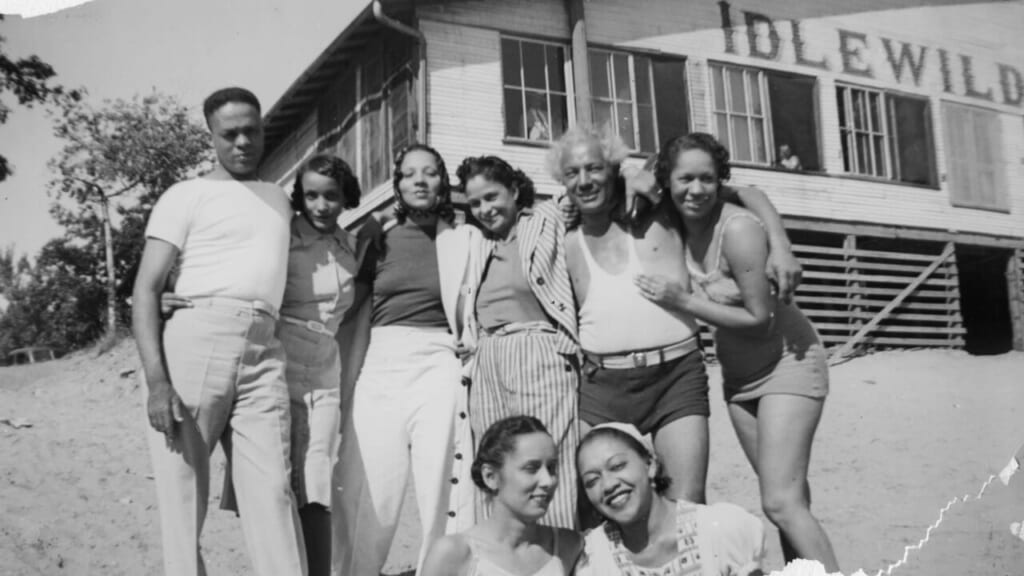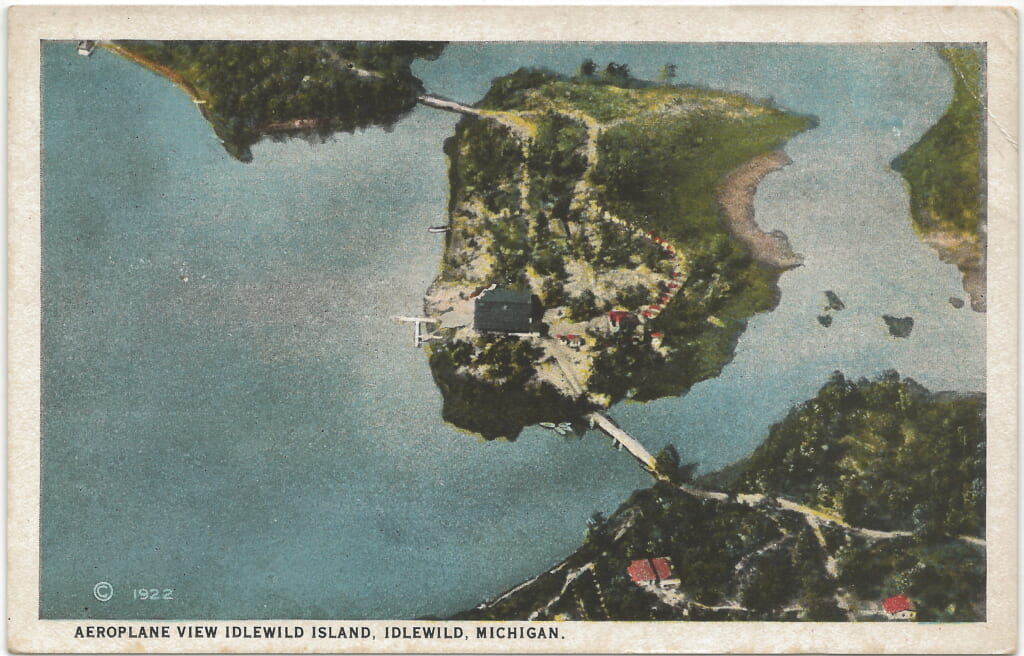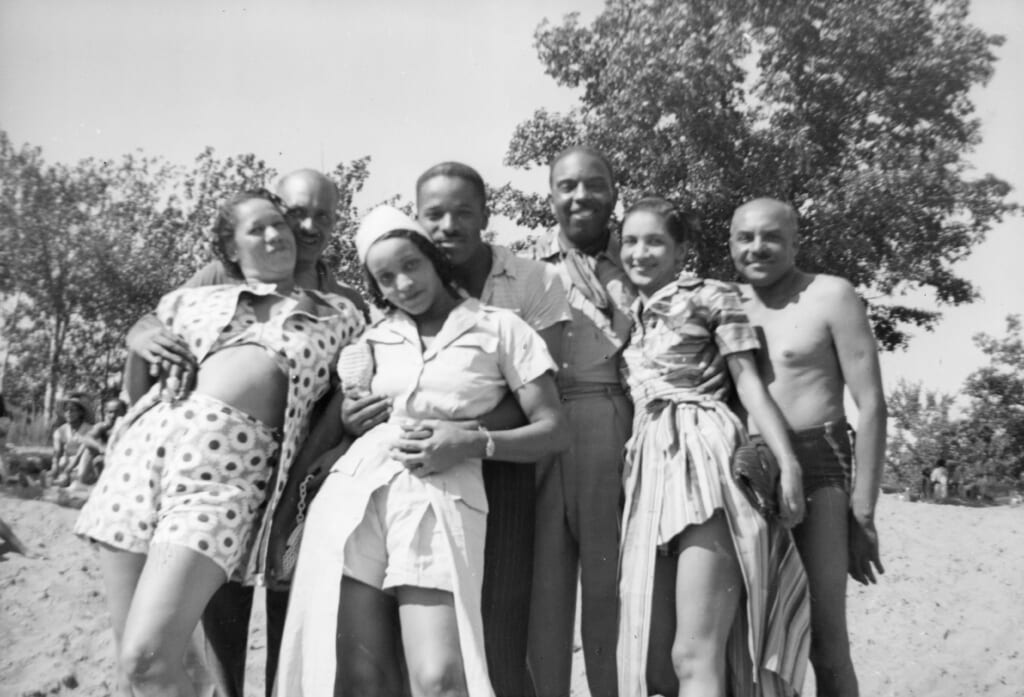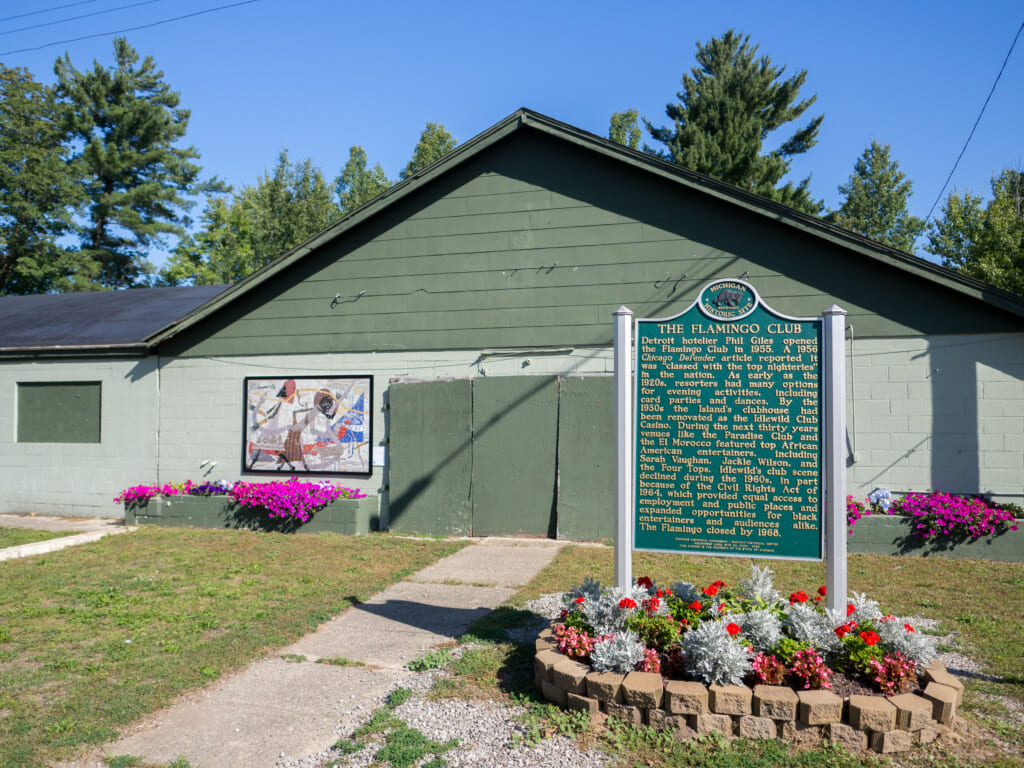What we did on our summer vacations: Revisiting Idlewild
As we reach the peak of the summer heat, theGrio celebrates the legacy of Black summer retreats, beginning with Idlewild, Michigan.
On Wednesday, July 20, ownership of a strip of Los Angeles’ Manhattan Beach—formerly known as “Bruce’s Beach”—was restored to the family of its original owners, Charles and Willa Bruce. In the early 20th century, the Bruces had purchased two plots on the prime oceanfront, developing them into a haven for Black beachgoers and consequently enduring years of racial harassment before being driven off their property by the local government’s claim of eminent domain in 1924.
It would take nearly 100 years until the Bruces’ descendants would emerge victorious, as Los Angeles County finally recognized their rightful and long-held claim to the land. But the battle for Bruce’s Beach inspired theGrio to revisit other historic enclaves for Black vacationers, some still enduring and others nearly forgotten. As we wind our way through the sweltering dog days of summer 2022, we’re taking a look at several locales where our ancestors once spent their leisure time, beginning with the once-idyllic Michigan lakefront community known as Idlewild.

“It’s always hard to leave Idlewild on a summer Sunday afternoon,” mused the narrator of Alice Randall’s 2020 historical novel Black Bottom Saints. While beloved rap icons Outkast based Idlewild in their native Georgia for their 2006 film of the same name, Randall’s is among several literary works that reference the true location of the legendary Black island retreat, including Nella Larsen’s 1929 classic Passing and W.E.B. Du Bois’ 1928 romantic novel, Dark Princess.
Du Bois was reportedly among many notables of the era, including Madam C.J. Walker, to purchase property in Idlewild, making his literary reference to the place no coincidence. As Ronald J. Stephens, a Detroit native, Idlewild scholar, and professor of African American Studies in the School of Interdisciplinary Studies at Purdue University writes in Idlewild: The Rise, Decline, and Rebirth of a Unique African American Resort Town (University of Michigan Press), the community’s identity as a destination for the Black bourgeoisie also echoed the famed sociologist’s then widely touted theory of the “Talented Tenth.”
Discussing the politics of respectability and individual self-definition among this class of African Americans, [E. Franklin Frazier’s Black Bourgeoisie] analyzes the identity of this group as one enmeshed by a myth that compensates for their exclusion from white America by encouraging them to live in a world of make-believe and also to attempt to escape from identifying with the masses of Negroes. Perhaps this mindset attracted middle-class Black vacationers to Idlewild. They imagined Idlewild as a utopian community that could provide economic opportunities and build economic structures and institutions.
Source: Idlewild: The Rise, Decline, and Rebirth of a Unique African American Resort Town (Google Books)

Founded by white developers in 1912, Idlewild was reportedly created for exactly those purposes. As only the third resort town in America open to Black visitors, the developers saw promises in the growing upwardly mobile Black populace at the turn of the last century.
“These developers weren’t totally out for a profit for themselves,” Stephens explained to Second Wave Michigan in 2020. “Although they were businessmen, they understood that there was a Black economy. They understood that there were Black intellectuals and professionals who, like white America, needed rest and relaxation.”

Almost equidistant between Detroit and Chicago—as well as the Ontario border, no doubt a boon for Prohibition-era bootleggers—the resulting resort town of Idlewild was comprised of cottages, clubhouses, motels, and more, all nestled into the scenic nature of northwest Michigan. Understandably, it made for an attractive and convenient retreat for the so-called Black elite of those nearby metropolises, who were known to escape to Idlewild on summer weekends, or for the entire season.
The community also proved a popular draw for Black entertainers well into the middle of the 20th century, providing a flourishing Black-centric space in an era where segregation was the norm in most American cities, let alone entertainment venues. Nicknamed “the Summer Apollo [Theater] of Michigan,” Louis Armstrong, Lena Horne, Della Reese, Jackie Wilson, Sammy Davis, Jr., B.B. King, Dinah Washington, Aretha Franklin, and Motown legends The Four Tops and The Temptations were just some of the talents who are said to have found both a safe haven and a career launching pad in Idlewild, many at the now-landmarked Flamingo Club.
However, by the second half of the 20th century, interest was waning, as, thanks to the Civil Rights Act of 1964, integration was on the rise—which for some, held far more appeal than mobility within a primarily Black enclave. While the rural area’s terrain remains stunning to this day, the Black community of Idlewild significantly declined as those with the means were suddenly granted access to new and more appealing spaces. The town inevitably suffered as many abandoned it, with only a small number of inheritors now holding space as elders in the area.
“Segregation is what built Idlewild,” said Stephens, “[Its leaders] didn’t truly understand what that meant, so they weren’t reinvesting in Idlewild.” For decades, the once vibrant community would continue to fall into disrepair, leaving only a hint of its incredible history.

Idlewild’s heyday may be long gone, but the legacy and promise of the area once known as “Black Eden” have not. In this century, the community has gained renewed attention, as reported by Second Wave Michigan. 2003 saw the opening of the Idlewild Historic and Cultural Center; in 2008, the Michigan state legislature established a grant to revitalize the area, followed by the launch of the Idlewild Centennial Commission by then-Governor Jennifer Granholm in 2009.
In recent years, even more visitors have been rediscovering Idlewild’s magic. Thanks to Cedric McDougle, a descendant of an area resident, the Summer Oasis Music Festival now brings a predominantly Black audience back to Idlewild for a music-filled weekend of “glamping,”—this year, from August 19-21. The days following will kick off the weeklong Idlewild International Film Festival, founded by the Cinematic Griot Collective “to the forefront people and places that are often overlooked, misrepresented and forgotten.”
As awareness of Idlewild’s history and beauty grow, so does its chance for a full renaissance; to learn more about the history of this legendary Black resort town, you can check out the resources below:
- Idlewild: The Black Eden of Michigan, by Ronald J. Stephens, part of the “Images of America” series (2001, Arcadia Publishing)
- Black Eden: The Idlewild Community, by Lewis Walker and Ben C. Wilson (2002, Michigan State University Press)
- Idlewild and Woodland Park, Michigan: An African American Remembers, by Rose Louise Hammond (1994, Run With It)
- Ted Talbert’s award-winning 1995 documentary Idlewild: A Place in the Sun.
- Home Sweet Sanctuary: Idlewild Families Celebrate a Century, by Gloria House (2011, Broadside Lotus Press)

Maiysha Kai is theGrio’s lifestyle editor, covering all things Black and beautiful. Her work is informed by two decades’ experience in fashion and entertainment, great books and aesthetics, and the brilliance of Black culture. She is also the editor-author of Body (Words of Change series).
TheGrio is FREE on your TV via Apple TV, Amazon Fire, Roku, and Android TV. TheGrio’s Black Podcast Network is free too. Download theGrio mobile apps today! Listen to ‘Dear Culture’ with Panama Jackson.


